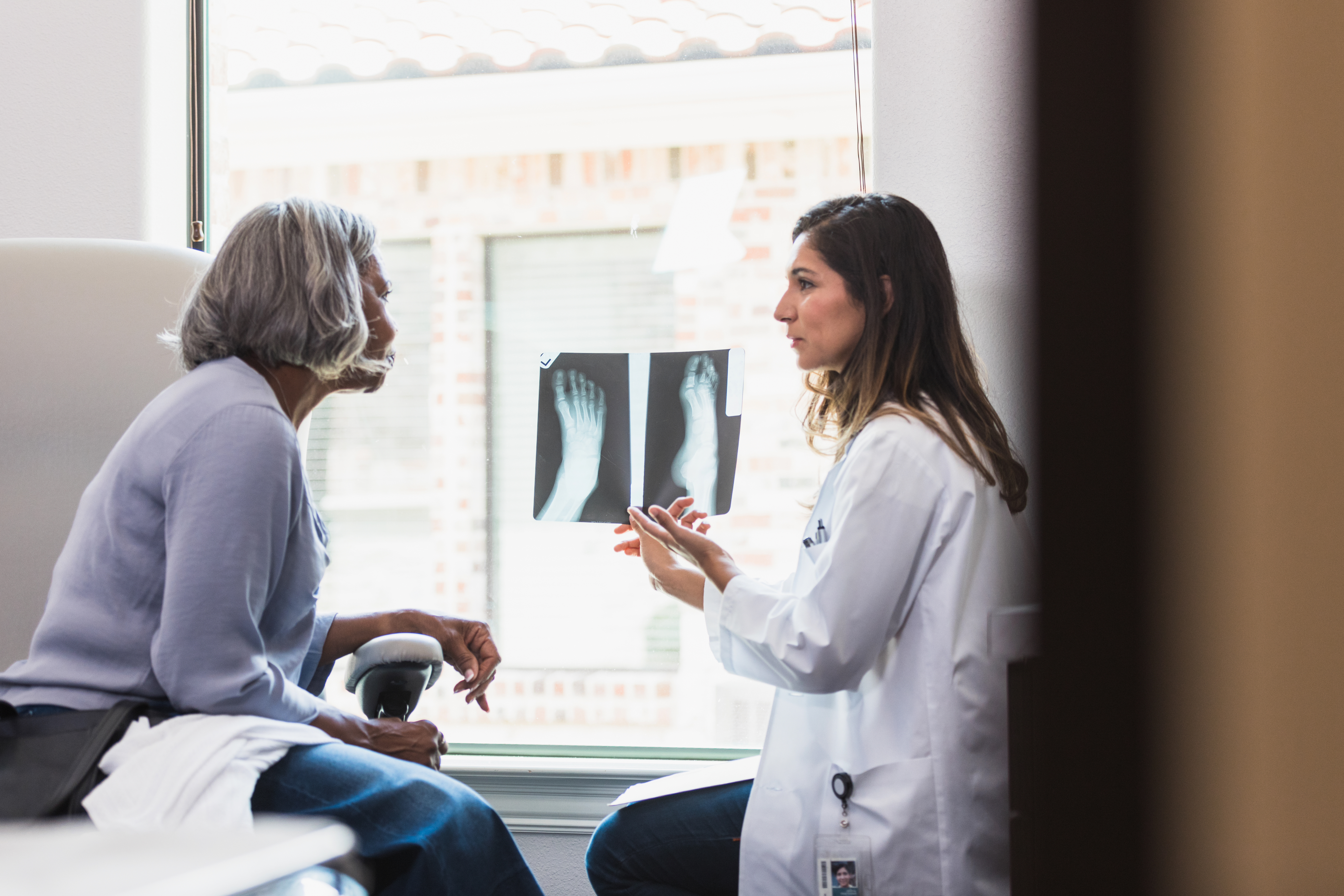Easy ways to strengthen your bones now to prevent osteoporosis later

Of the estimated 10 million Americans who have osteoporosis, 8 million are women. Unfortunately, most people don’t know they have it until they break a bone.
The bone disease affects women more than men for a number of reasons:
- Women typically have smaller, thinner bones than men.
- When women reach menopause, their level of estrogen, a hormone that protects bones, decreases sharply.
Although this disease mostly affects older women, there are steps you can take to help build bone mass and prevent bone loss at any age.
What can you do now?
Your bones are like a savings account — there’s only as much bone density in your account as you deposit. What you do prior to menopause can pay off later in your life.
Here are some ways to adjust your lifestyle to help slow the loss of bone mass:
- Stop smoking.
- Limit your intake of alcohol to one drink per day.
- Eat calcium-rich foods, such as kale, broccoli and yogurt.
- Get your dose of vitamin D through supplements or sunshine. Vitamin D helps absorb the calcium from foods.
- Start weight-bearing and resistance exercises. These include walking, running, yoga and lifting weights.
- Try to maintain an average weight. Women who are underweight are at greater risk for osteoporosis.
When should you have an osteoporosis screening?
You should be screened if:
- You’re a woman 65 years old or over.
- You’re a postmenopausal woman younger than 65 and are at an increased risk for osteoporosis.
What’s the screening like?
Your doctor will do a bone mineral density test, which uses an X-ray to measure how much calcium and minerals are in your bones. The test is painless and takes less than 15 minutes.
What happens next?
If you’re diagnosed with osteoporosis, your doctor might prescribe you certain medications to slow bone loss. They might also prescribe estrogen therapy.
To prevent falls, you should wear supportive shoes with no heel or a low heel.
Make your home as safe as possible by removing clutter, cords and rugs that you could potentially trip on. You should also keep halls and stairs well-lit; place a night light in each room as well. Watch out for slippery floors, especially those made of marble, in public buildings.




